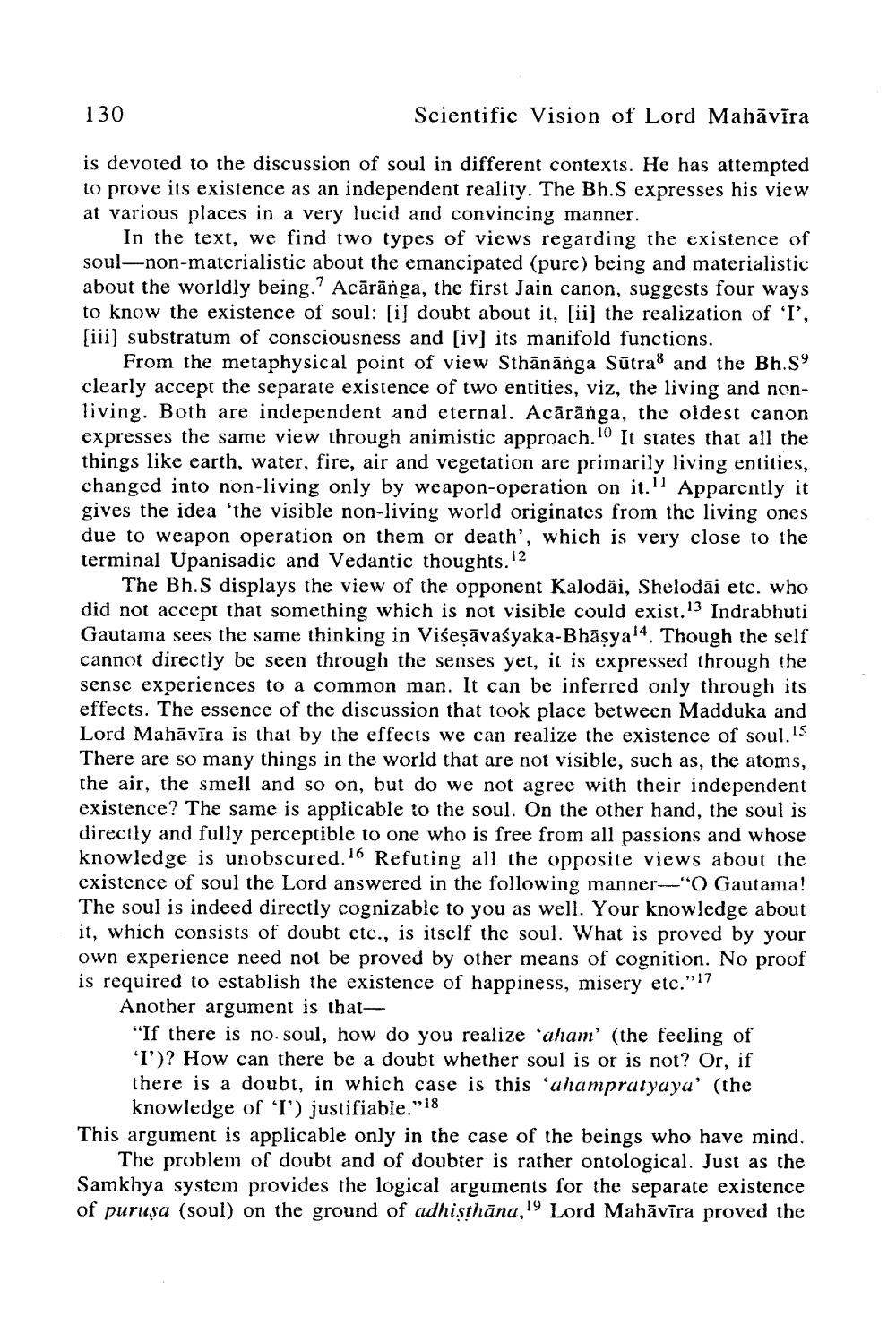________________
130
Scientific Vision of Lord Mahāvīra
is devoted to the discussion of soul in different contexts. He has attempted to prove its existence as an independent reality. The Bh.S expresses his view at various places in a very lucid and convincing manner.
In the text, we find two types of views regarding the existence of soul-non-materialistic about the emancipated (pure) being and materialistic about the worldly being.? Acārānga, the first Jain canon, suggests four ways to know the existence of soul: [i] doubt about it, [ii] the realization of 'I', (iii) substratum of consciousness and (iv) its manifold functions.
From the metaphysical point of view Sthānānga Sūtral and the Bh.So clearly accept the separate existence of two entities, viz, the living and nonliving. Both are independent and eternal. Acārānga, the oldest canon expresses the same view through animistic approach.10 It states that all the things like earth, water, fire, air and vegetation are primarily living entities, changed into non-living only by weapon-operation on it." Apparently it gives the idea 'the visible non-living world originates from the living ones due to weapon operation on them or death', which is very close to the terminal Upanisadic and Vedantic thoughts. 12
The Bh.S displays the view of the opponent Kalodāi, Shelodāi etc. who did not accept that something which is not visible could exist.13 Indrabhuti Gautama sees the same thinking in Višeşāvasyaka-Bhāsyal4. Though the self cannot directly be seen through the senses yet, it is expressed through the sense experiences to a common man. It can be inferred only through its effects. The essence of the discussion that took place between Madduka and Lord Mahāvīra is that by the effects we can realize the existence of soul.IS There are so many things in the world that are not visible, such as, the atoms, the air, the smell and so on, but do we not agree with their independent existence? The same is applicable to the soul. On the other hand, the soul is directly and fully perceptible to one who is free from all passions and whose knowledge is unobscured. 16 Refuting all the opposite views about the existence of soul the Lord answered in the following manner-"O Gautama! The soul is indeed directly cognizable to you as well. Your knowledge about it, which consists of doubt etc., is itself the soul. What is proved by your own experience need not be proved by other means of cognition. No proof is required to establish the existence of happiness, misery etc."17
Another argument is that"If there is no soul, how do you realize 'aham' (the feeling of ‘T')? How can there be a doubt whether soul is or is not? Or, if there is a doubt, in which case is this ‘ahampratyaya' (the
knowledge of T') justifiable."18 This argument is applicable only in the case of the beings who have mind.
The problem of doubt and of doubter is rather ontological. Just as the Samkhya system provides the logical arguments for the separate existence of purusa (soul) on the ground of adhisthāna, 19 Lord Mahāvīra proved the




